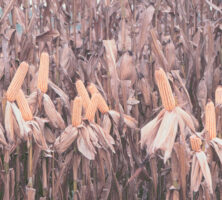The Shakers, whose official name is the United Society of Believers in Christ’s Second Appearing, were called Shakers or “Shaking Quakers” because they would sing, dance, shout, and shake in an attempt to “shake off evil” during their religious meetings. Founded in England in the 1750s, the group first arrived in the United States in 1774, and in the late nineteenth century a short-lived colony was established in coastal Georgia.
During the nineteenth century the American Shaker population, which was located primarily in Kentucky, New York, Ohio, and the New England area, was diminishing. To increase their numbers, they started two southern colonies—one in Florida and one in Georgia. The colonies were also founded with the intention of providing a more pleasant climate, particularly for the group’s elderly members. Their chief purpose, however, was to expand membership and increase the financial base of the society. By taking advantage of the warmer climate, they hoped to grow a more diverse group of crops to help their failing economic resources. Not all of the Shakers supported the move, arguing that since they already owned houses and land that had been abandoned by members who had converted away from the group, they should not purchase new houses and property.
Despite some members’ disapproval, the group went forward with plans for the Georgia colony. In 1898 a group of Shakers from the colony in Union Village, Ohio, bought a plantation house in Glynn County, Georgia, which they renovated for their use. They began to grow corn, pumpkins, rice, and sweet potatoes on the farm as a means of generating income.
Also in 1898 the Shakers purchased an estate in White Oak, in Camden County, and during that year they built an additional house on the same land, which became the headquarters for the Georgia Shakers. The Glynn County plantation became a branch of the White Oak colony, but eventually financial troubles forced the Shakers to sell it, and the White Oak land became their only Georgia location.
Though the Georgia Shakers were well received by their neighbors and even welcomed visitors and tourists to view their plantation, their colony did not grow. Because of their strict policies on purity, Shakers do not marry and therefore have no children. They increase their numbers by gaining converts and through adoption. In spite of their friendliness with the Shakers, most Georgians were not very receptive to these ideas. Unable to achieve the goal of increasing their numbers, the Shakers left Georgia and returned to Ohio in 1902. Of all the Shaker communities in the United States, the White Oak colony was the shortest lasting. There are no remnants of the Shaker presence in Georgia today.






